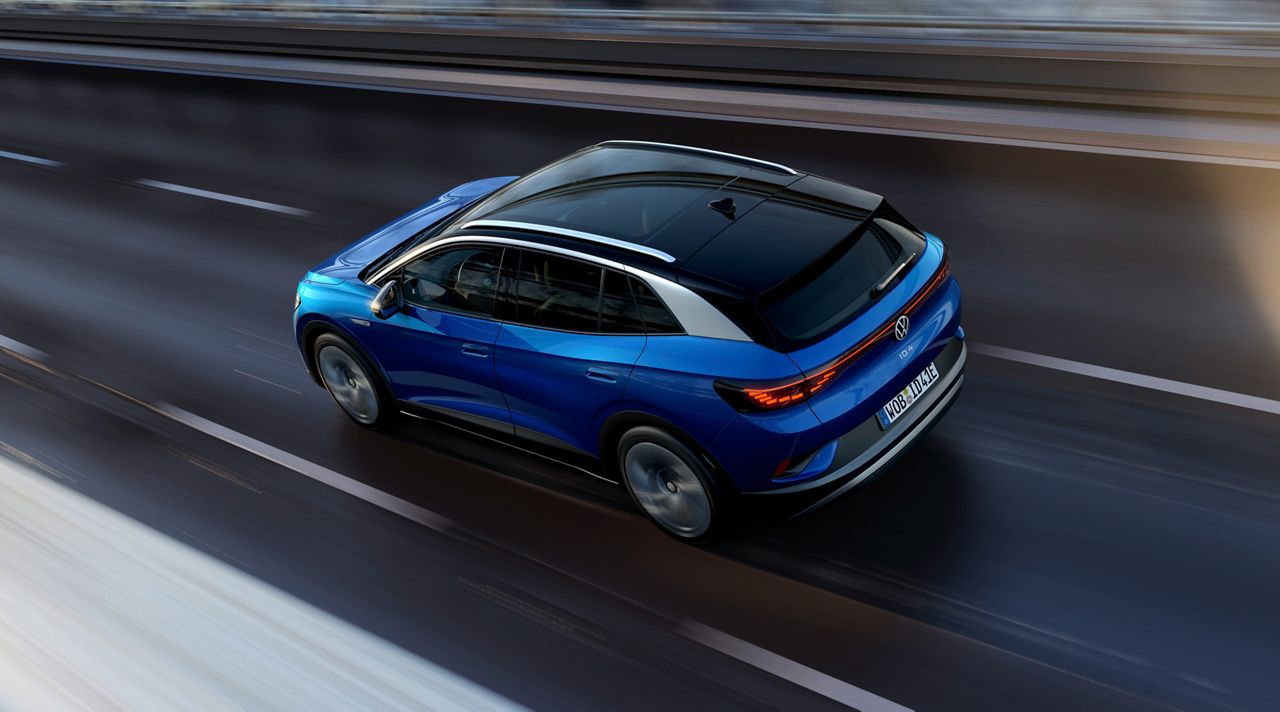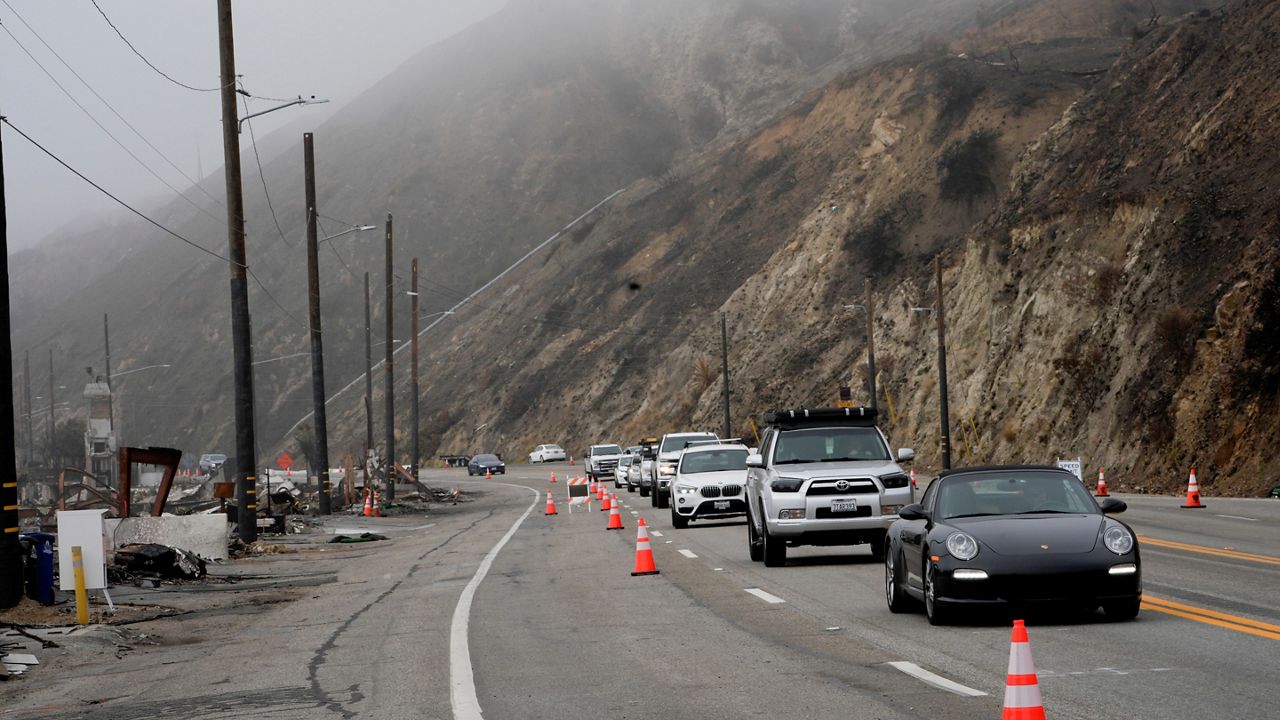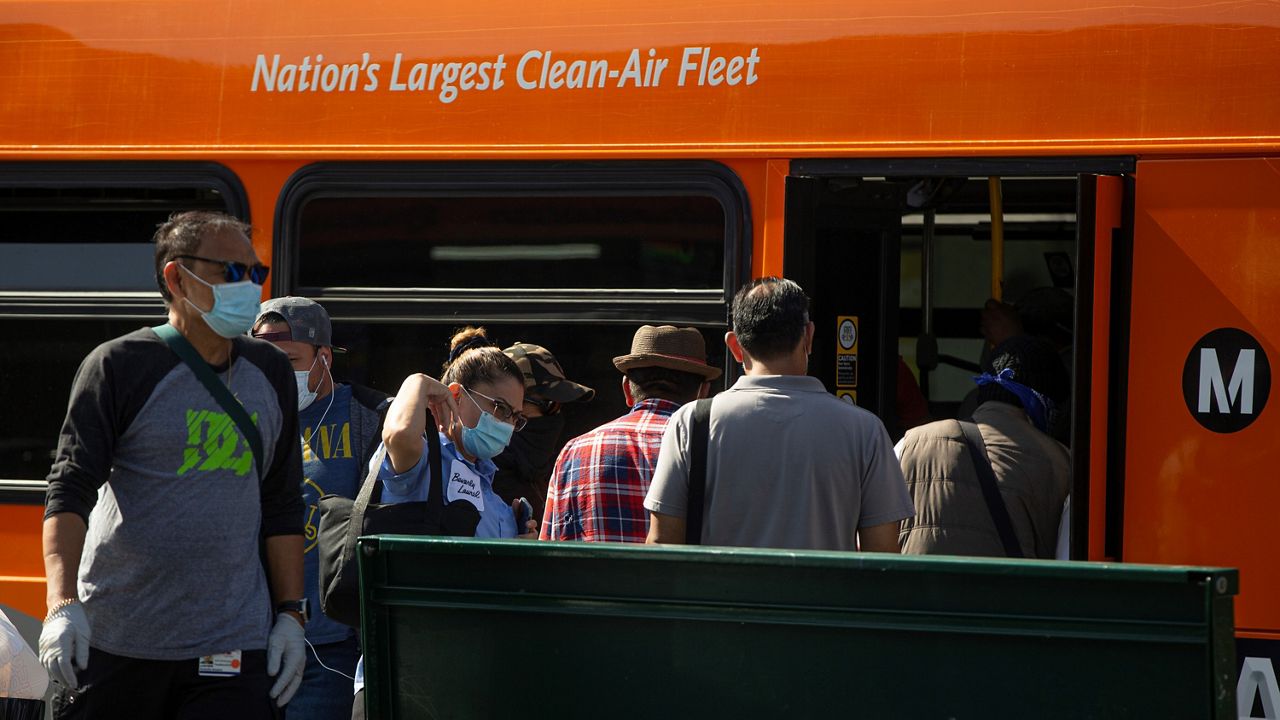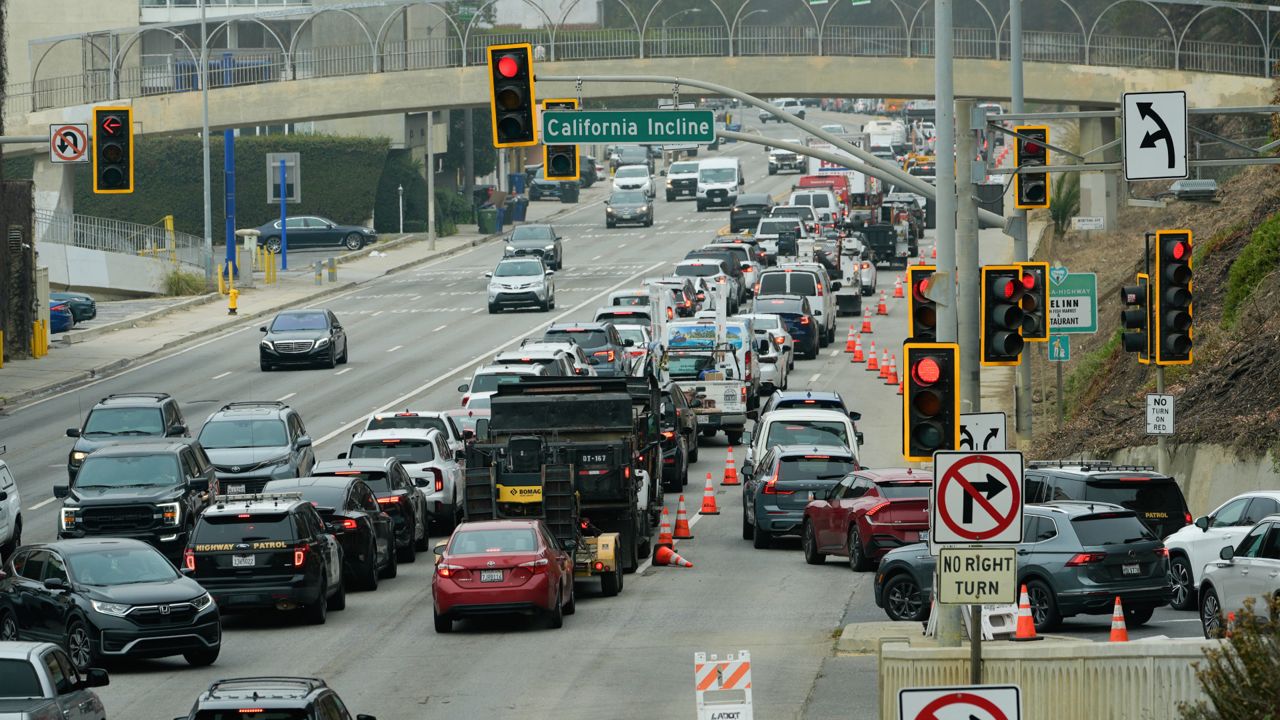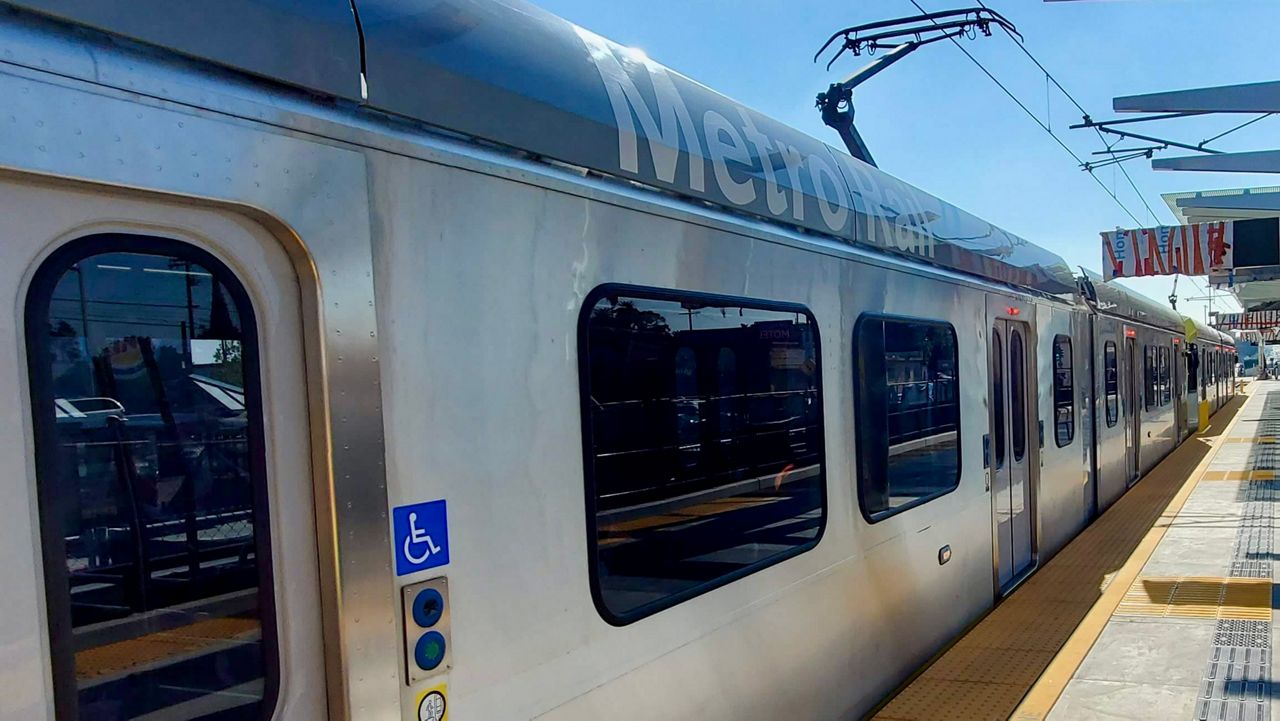It’s been almost two weeks since Gov. Gavin Newsom signed an executive order requiring that sales of all new passenger vehicles in California be zero emissions by 2035. But the question remains: How do we get there?
Electric vehicles or EVs currently account for just 1.2 percent of the 27.7 million registered passenger vehicles in the state, according to the California Department of Motor Vehicles. Ten years after the Nissan Leaf and Chevrolet Volt ushered in the modern era of zero-emissions cars, and even with dozens of new models joining them on the market, they still account for just 5.3 percent of California's new passenger vehicle sales, according to the automotive research web site, iSeeCars.com.
“A lot of it comes down to teamwork, and working really closely with industry, local and federal government, with all the state agencies,” said Tyson Eckerle, deputy director of zero emission vehicle market development in the Governor’s Office of Business and Economic Development. “There’s a bunch of levers we can pull, but we’re looking at four pillars: vehicles, infrastructure, human behavior, and economic development."
Right now, there are more than 40 zero emissions passenger vehicles on the market, the bestseller being the battery-electric Tesla Model 3 compact sedan. About a quarter of zero emissions models are capable of going more than 200 miles per charge.
There is, however, a dearth of available electrics in the vehicle types most Americans are buying. Pickup trucks and SUVs currently account for 70 percent of U.S. passenger vehicle sales, almost all of them powered with gas.
“That’s the No. 1 thing that scares people. They look at the vehicle they like to drive, and they don’t see an electric version of that,” said Joel Levin, executive director of the nonprofit EV advocacy group, Plug in America.
That will start to change in the next few months when Volkswagen starts selling its ID.4 SUV and Ford releases its Mustang Mach-E crossover later this year. By early 2021, pickup trucks will follow suit, when the Michigan-based startup Rivian goes into production with its R1T, and Ford makes an electrified version of its bestselling F-150, expected in 2022.
Right now, there are about 60,000 public EV chargers in California, Eckerle said. By 2025, the state expects to have 250,000, including 10,000 so-called fast chargers that can refuel a battery electric vehicle to 80 percent full in about 30 minutes. That’s enough to support 1.5 million zero emissions vehicles.
To get to the number of EVs the governor’s executive order calls for, “you’d have to multiply those numbers by about ten,” Eckerle said. The goal is to have roughly 15 million zero emissions vehicles on the road by 2035.
The governor’s office is currently working with the California Energy Commission to determine exactly how much infrastructure will be needed to support the mass adoption of electric vehicles.
“There’s a few moving targets. Batteries are getting better and longer range, so you need less chargers,” he said. “The speed of charging is also increasing.”
To ensure the needed infrastructure to support zero-emission vehicles, Gov. Newsom’s executive order requires state agencies, in partnership with the private sector, to accelerate deployment of affordable fueling and charging options.
One of those partnerships – with the Volkswagen Group’s Electrify America subsidiary – has already yielded more than 100 ultra-fast charging stations in the state. Capable of refueling at the rate of 20 miles of charge per minute, the stations are part of an ongoing $800 million infrastructure and education investment Electrify America was ordered to make as part of its diesel emissions settlement with the California Air Resources Board.
Consumer awareness is another major hurdle. Fifty percent of Californians don’t even know electric vehicles exist, according to researchers at the University of California, Davis.
“It’s new technology. Some people haven’t been exposed to it,” said Eckerle, adding that public education and outreach are a key part of increasing EV adoption.
In 2017, an uncommon alliance of more than 40 stakeholders came together to help accelerate the adoption of EVs. Veloz, as the group is called, includes government agencies such as the California Air Resources Board, utilities like Southern California Edison, as well as various automakers and environmental organizations.
Each year, the group runs an Electric For All public awareness campaign to help in its mission. Last year’s campaign starred former California governor and action movie star Arnold Schwarzenegger in a video spot called Kicking Gas that generated 16.4 million views, according to Veloz. Its next campaign will launch later this year.
The governor’s executive order “sends a really important signal to Californians that EVs are not novel, they’re not niche, and they're not temporary. They’re here today and part of the future.”
They're just not heavily advertised.
As part of its $14.7 billion settlement with the U.S. Department of Justice for diesel emissions violations, Volkswagen Group was required to educate the public about electric vehicles. Under the Electrify America subsidiary it was required to set up, the company has rolled out various non-branded EV education campaigns, including the Normal Now campaign it launched last year to help mainstream zero-emissions vehicles.
A 2018 study commissioned by the Northeast States for Coordinated Air Use Management showed that six major automakers in the U.S., including General Motors, Ford, Toyota, Nissan, Volkswagen, and FiatChrysler, spent almost nothing to advertise their electric vehicles.
Despite a trio of splashy Super Bowl ads for electric vehicles earlier this year – for Audi’s e-Tron, Porsche’s Taycan, and General Motors’ Hummer – advertising of electric models hasn’t been nearly as prevalent as it’s been for more traditional gas-powered cars.
Still, Ecklerle is counting on the commercial marketing muscle of major automakers to do a lot of the heavy lifting of public awareness, as they roll out highly anticipated electric models like the VW ID.4 SUV and Mustang Mach-E crossover later this year.
“Traditional automakers are seeing this is the future, so you’ll start seeing a lot more ads,” he said.
Employment is fundamental to the state’s ultimate success in being able to achieve the governor’s goal, Eckerle said.
He pointed to the success of California-based companies such as Tesla, which has sold more than a million electric cars globally and is now the world leader in EV sales. And there are 33 other EV manufacturers in the state, including the luxury startup Lucid Motors, based in Newark, and Canoo, in Torrance. EVs, according to the U.S. Census, are California’s second-biggest export.
“There’s a big manufacturing piece, of course, but a lot of it is design and engineering and testing,” Eckerle said. “Most automakers have their headquarters at least for design and engineering in California because the talent is here.”
In addition, getting the state to its goal of 100 percent new vehicle sales being electric by 2035 will require the building of 30 new charging stations daily, Eckerle said – a feat that will involve all kinds of jobs, from electricians to build the charging stations to pipefitters. “That’s a lot of jobs just putting the equipment in the ground.”
Plug In America’s Joel Levin said that achieving Gov. Newsom’s goal “certainly will be a lot of work, but I think it’s achievable. It builds on everything else that California has been doing up to now.”
Indeed, California has been putting the building blocks in place for a move like this for decades. It has been working on clean air since the early 1950s when professor Arie Haagen-Smit at the California Institute of Technology in Pasadena first connected the city’s smog problem with its source: cars.
In 1960, the California legislature established the Motor Vehicle Pollution Control Board, and in 1968 the federal government granted the first of more than 100 emissions waivers allowing California to set its own vehicle emissions standards. The state Air Resources Board has been mandating low-emissions vehicles since 1990 and has mandated increasing annual sales of zero-emissions vehicles for almost two decades.
Now, Gov. Newsom’s executive order will call upon the ARB to develop the regulations that mandate 100 percent of in-state sales of new passenger cars and trucks are zero-emission by 2035. Achieving that goal will reduce automotive greenhouse gas emissions by more than 35 percent in the state, the executive order said.
“Any time there’s ever a big step forward in the U.S., it always, always, always starts in California,” Levin said.
There are bright spots in the state that could point the way forward, as laid out in the new Beacon Economics report, Expanding Access to Sustainable Transportation in California. California is currently home to the top five U.S. cities for EV adoption, with large urban counties having the highest percentage of the clean energy vehicle market. San Francisco ranks first, with a 9.9 percent adoption rate, L.A. ranks third at 5.5 percent, and San Diego ranks fourth at 5.1 percent.
But about 12 percent of California’s population resides in rural areas, according to Beacon Economics, which pointed out some success stories in more agrarian parts of the state. Yolo County, near Sacramento, boasts an EV adoption rate of 6 percent, due, in large part, to robust infrastructure. And Tulare County, an agricultural hub in Central California that partnered with nearby Kern County, is part of a $3.5 million electric car-sharing program that lets residents rent EVs by the hour from rural housing complexes.
“We know that the adoption and purchase of EVs is greater in urban areas because it is correlated with wealth,” said Noel Perry, founder of Beacon Economics’ partner in the new report – the nonprofit environmental economics and education group, Next 10. “But it’s important we look at rural areas because of the future of sustainable transportation. The reduction of emissions is going to have to happen all over the state.”






